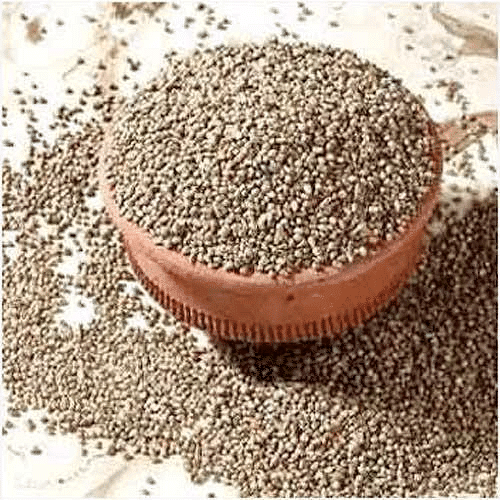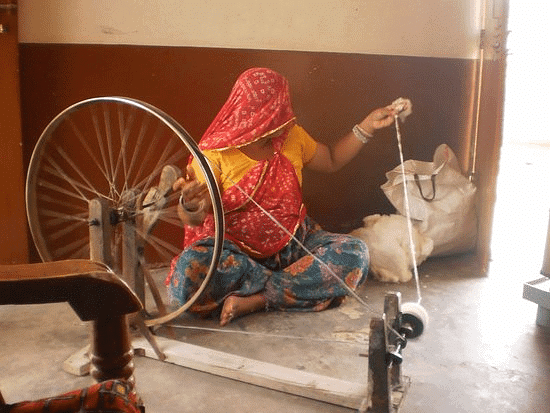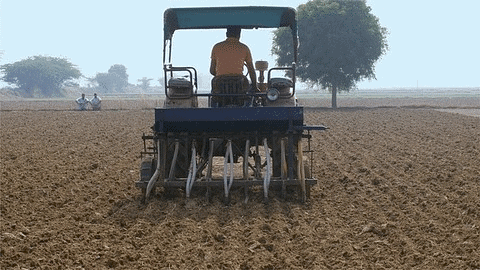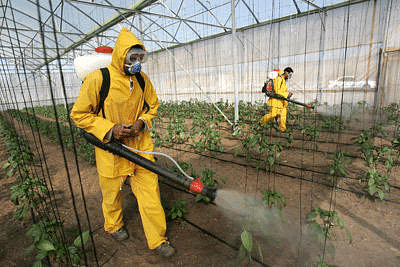A seed tells a Farmer`s Story Class 5 Notes EVS Chapter 19
| Table of contents |

|
| Introduction |

|
| I am a Small Seed |

|
| When times changed |

|
| More and more expense |

|
| Bhaskarbhai’s Farm (Dehri village, Gujarat) |

|
Introduction
The chapter “A Seed Tells A Farmer’s Story” describes differences in the farming of modern times and earlier times and it is also aware of the difficulties faced by the farmers today. The chapter makes students aware of agriculture. A small bajra seed is a speaker which tells us a story of how things in farming have changed over time.
I am a Small Seed
A small bajra seed is a speaker in the story who was staying in a wooden box since 1940. It tells us a story that is not a story of seed alone but also a story of his farmer Damjibhai and his family who used to grow bajra crops in the past.

- The seed was born in Vangaam in Gujarat. There was a good bajra (millet) crop that year and so was a festive mood in the village. The village was famous for grain and vegetables. Damjibhai used to keep aside some seeds from a good crop for growing the crops next year.
- The seeds were earlier stored in a dried gourd coated with mud but that year Damjibhai made a strong wooden box to store seeds. He stored the seeds and put some leaves of neem to protect them from insects. That wooden box was the home of seeds.
- Damjibhai and his cousins lived together in a joint family during those days. Everyone in the village helped each other, even in farming. When the crop was ready and harvested, everyone celebrated together.
- In the winter, it would be time to enjoy the undhiya (a kind of stew). All the vegetables were put into a clay pot, along with fresh spices. The pot was sealed and kept between hot coals. The vegetables were cooked slowly in this special cooker, on the fields. The pot was placed upside down! That is why the dish was called undhiya or “upside-down” in Gujarati.
 Undhiya
Undhiya
- The dish (undhiya) was eaten with freshly cooked bajra rotis. The homemade butter, curd, and buttermilk were also served with the meal.
- During those times farmers used to grow different kinds of crops – grains, and vegetables according to the season. The farmers used to keep enough for their needs and sold the rest to shopkeepers from the city. Some farmers also grew cotton. At home, family members spun cotton on a charkha (spinning wheel) to make cloth.

When times changed
Many changes took place in the village over the period of time. A dam had been built on the river from where some places could get water. The canal brought water from the dam to the fields. Then the village got electrified. People started growing one or two crops like wheat and cotton which can be sold at better prices in the market.
- Farming has changed a lot and now farmers began to buy seeds from the market. They said that they were new kinds of seeds. So, farmers did not need to store seeds from the old crop.
- Damjibhai was getting old. His son Hasmukh looked after the fields and the family. Hasmukh was making a profit from farming. He rebuilt the old house, brought new machines for farming, and used an electric motor to pump water. He bought a motorcycle to go to the city easily and also a tractor to plow the field. The tractor could do in a day, which the bullocks would take many days to do.

- The forgotten seeds like jowar, bajra and vegetables were doubtful of the progress man has made in farming. There is no longer any need for seeds like them, and animals like the bullocks. After the invention of the tractor, even people who worked in the fields, are no longer needed. How will they earn money? What will they live on?
More and more expense
Farming has changed even more in the next twenty years. There were no domestic animals like cows and buffaloes and without them, there was no cow dung, to be used in the fields as fertilizer. Hasmukh had to buy expensive fertilizer for his crops. The crops grown from new kinds of seeds were easily affected by harmful insects. Insecticides had to be sprayed on the crops to keep away the insects. They smell very bad and were very expensive.
- The canal water was not sufficient for the new crops and farmers used pumps to lift water from deep under the ground. It reduces the level of the water table inside the earth. To meet all the expenses in farming, loans had to be taken from the bank. Whatever little profit was made, was used to repay the loan.

- But there was little profit! Everyone was growing cotton, so the cotton prices were not as high as before. The soil itself was no longer the same. Growing the same crop over and over, and using so many chemicals, had affected the soil so much that now nothing could grow well there. It was becoming difficult to earn a living by farming alone.
- Hasmukh too changed with the times. He is often tense and angry most of the time. His educated son Paresh did not want to do farming. He now started work as a truck driver. After all, the bank loans still had to be repaid. Often Paresh doesn’t come home for days.
Bhaskarbhai’s Farm (Dehri village, Gujarat)
Bhaskarbhai’s was quite different. There were dead leaves, wild plants, and grass everywhere! Some of the tree branches seemed so dry as if eaten by insects. At places, there were some plants with colorful leaves. Bhaskarbhai said they were croton plants which gave him a signal when the soil became dry. He explained that the roots of the croton do not go deep in the ground. So, when the top layer of the soil becomes dry, the croton leaves bend and become limp. This signal tells Bhaskarbhai which part of his farm needs to be watered.
- The soil on the farm was soft and crumbly. There were tall coconut trees, full of fresh coconuts. Bhaskarbhai does not buy fertilizers made in factories. His soil is fertile because of all the dried leaves which slowly rot and mix with it. There were thousands of earthworms in the soil of his farm. “These are my soil’s best friends”, he said. The earthworms soften the soil as they keep digging underneath to make tunnels. This way air and water can easily get into the soil. The earthworms also eat the dead leaves and plants, and their droppings fertilize the soil.
- We can make natural fertilizer by digging a pit in the garden and putting dried leaves in the pit, along with all the kitchen waste – peels of vegetables and fruits, and leftover food. Leave some earthworms in the pit. They turn the waste into compost (a natural fertilizer). So, we can get good fertilizer without spending extra money.

|
53 videos|388 docs|51 tests
|
FAQs on A seed tells a Farmer`s Story Class 5 Notes EVS Chapter 19
| 1. How did the expenses increase for Bhaskarbhai's Farm in Dehri village, Gujarat? |  |
| 2. Where is Bhaskarbhai's Farm located? |  |
| 3. How does a seed narrate the story of a farmer in the article "A seed tells a Farmer`s Story"? |  |
| 4. What is the main theme of the article "A seed tells a Farmer`s Story"? |  |
| 5. Why is the story of Bhaskarbhai's Farm significant in the context of agriculture in India? |  |




















